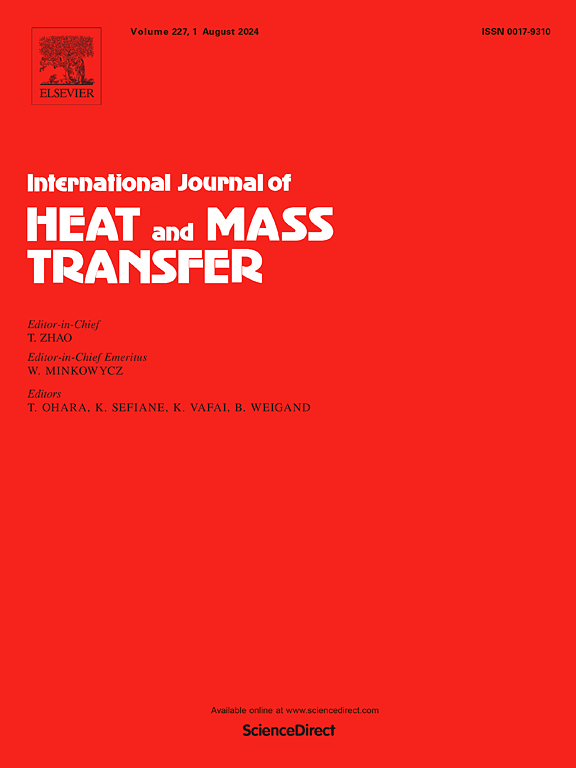Optimization assisted divide–combine approach to model cooling of a PV module equipped with TEG by using a trapezoidal shaped hybrid nano-enhanced cooling channel and performance estimation with generalized neural networks
IF 5
2区 工程技术
Q1 ENGINEERING, MECHANICAL
International Journal of Heat and Mass Transfer
Pub Date : 2025-02-07
DOI:10.1016/j.ijheatmasstransfer.2025.126757
引用次数: 0
Abstract
Innovative cooling strategies and efficient thermal management techniques are needed to increase the efficiency of photovoltaic (PV) modules. In the current work, a novel cooling channel method and computational approach is utilized for thermal management of PV module combined with thermoelectric generator (TEG) unit. The method uses an optimization assisted divide–combine computational approach while a trapezoidal wavy cooling channel is utilized. Hybrid nanofluid is used in the cooling channel. Simulations for cooling channel and PV-TEG unit are conducted by using finite element method while COBYLA algorithm is considered for optimization of trapezoidal wavy channel. It is shown that the corrugation amplitude has the largest effect on a trapezoidal wavy channel’s cooling effectiveness, while the inclination angle has the least effect. The range of average Nu improvements by adjusting the trapezoidal wavy channel’s amplitude, wave number, and inclination are obtained as 36%–42%, 13.5%, and 2.5%–3%. The average PV-cell temperature decreases by approximately 2.7C to 3.4C when the cooling channel is connected to the PV-TEG unit. It also decreases by approximately 1C to 1.3C when the wave number is changed. The optimum corrugation height (b/H) and inclination () for the best cooling performance are found as (b/H, )=(0.5, 36) when using 3 waves and (b/H, )=(0.5, 13.16) when using 11 waves. The PV-cell temperature drops with optimal channel configurations with wave numbers of 3 and 11 are obtained as 4.3C and 6C, respectively, in comparison to the reference cooling channel (flat channel employing only pure fluid). While the PV-TEG unit is coupled with parametric simulation of the cooling channel, generalized neural network models are used to successfully estimate the PV-cell temperature and TEG power. More complex channel assemblies and consideration of multiple PV-TEG combined units can be developed using the proposed optimization-assisted divide–combine methodology.
求助全文
约1分钟内获得全文
求助全文
来源期刊
CiteScore
10.30
自引率
13.50%
发文量
1319
审稿时长
41 days
期刊介绍:
International Journal of Heat and Mass Transfer is the vehicle for the exchange of basic ideas in heat and mass transfer between research workers and engineers throughout the world. It focuses on both analytical and experimental research, with an emphasis on contributions which increase the basic understanding of transfer processes and their application to engineering problems.
Topics include:
-New methods of measuring and/or correlating transport-property data
-Energy engineering
-Environmental applications of heat and/or mass transfer

 求助内容:
求助内容: 应助结果提醒方式:
应助结果提醒方式:


